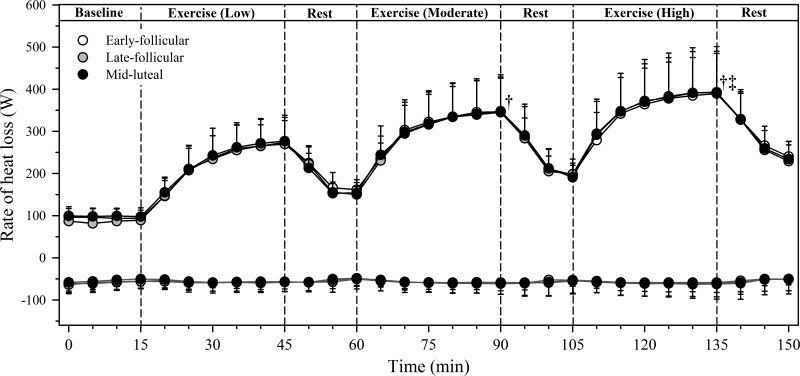Fig. 2.
Evaporative (black lines) and dry heat loss (dark gray lines) in young, non-endurance-trained women (n = 12) within the early-follicular (○), late-follicular (gray circles), and midluteal (●) phases of the menstrual cycle during three 30-min bouts of cycling at increasing fixed heat loads of ~250 (Low), ~340 (Moderate), and ~430 W (High) {equivalent to low-intensity [40% peak oxygen uptake (V̇o2peak)], moderate-intensity (55% V̇o2peak), and high-intensity (70% V̇o2peak) exercise, respectively} in hot, dry conditions (40°C, 15% relative humidity). Data are 5-min averages (means ± SD), with data from the final 5 min of each exercise bout being used for statistical analysis. Negative values for dry heat loss represent environmental heat gain. Significance level was set at P < 0.05. No significant among-phase differences were observed (P > 0.05). †Significantly different from Low. ‡Significantly different from Moderate.

